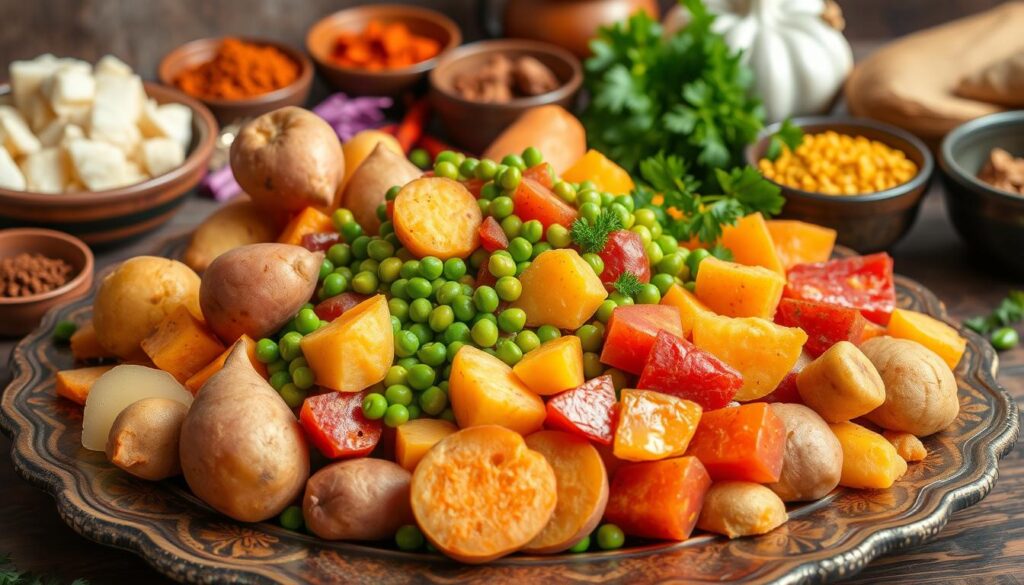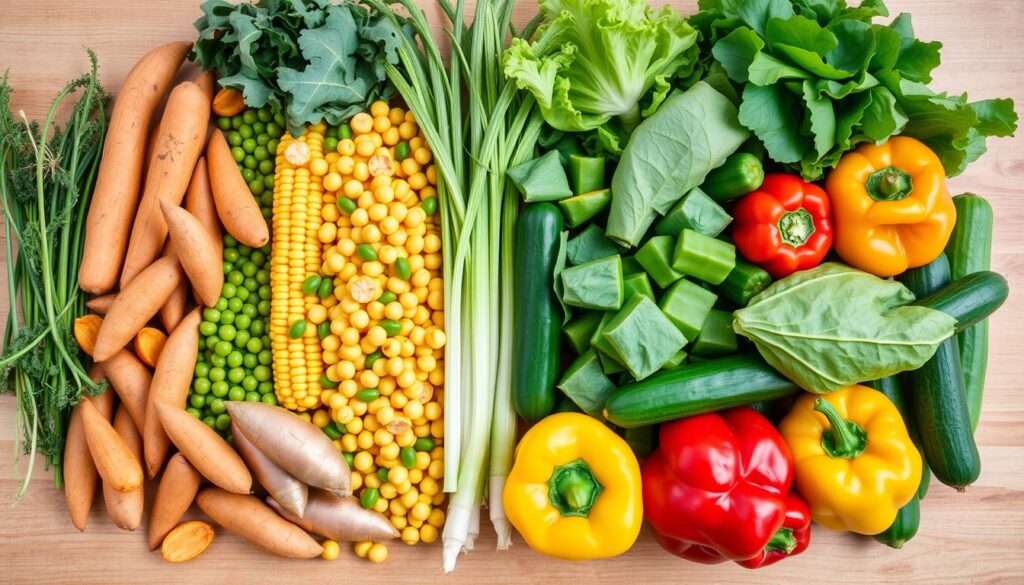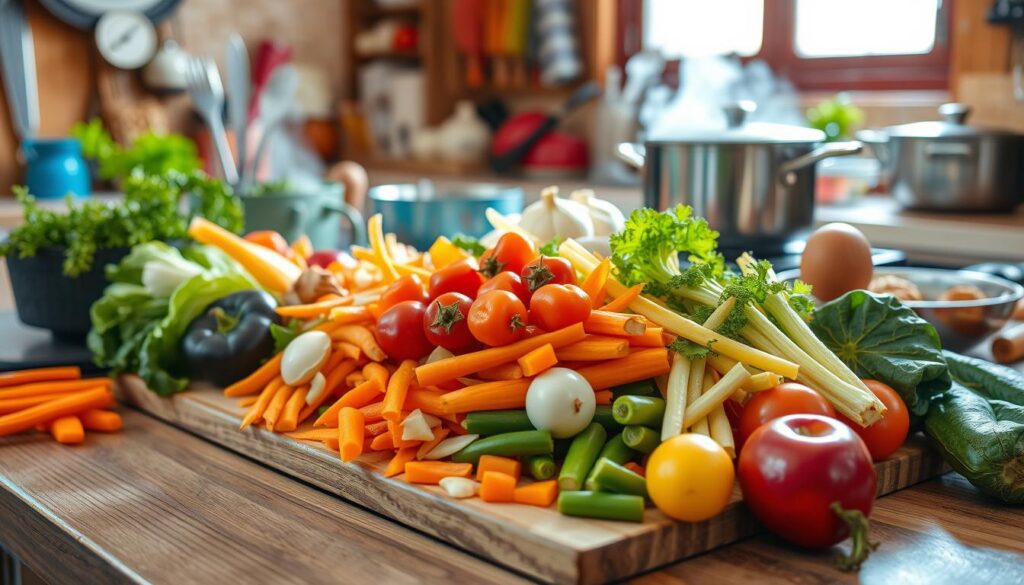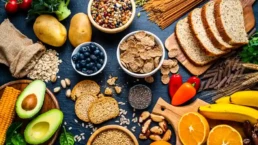Ever feel a little lost in the produce aisle, wondering which veggies are the real nutritional powerhouses and which ones might be packing a bit more of a carb punch? We’ve all been there! Understanding the difference between starchy and non-starchy vegetables is like unlocking a secret code to healthier eating. Think of it this way: potatoes and broccoli are both vegetables, but they play vastly different roles in your diet. Knowing why is key to fueling your body right.
Table of Contents
ToggleThis isn’t just another dry nutrition lesson – it’s your friendly guide to navigating the vibrant world of veggies. We’re going to break down the differences between starchy and non-starchy varieties in a way that’s easy to understand and even easier to apply to your everyday cooking. From the comforting carbs of sweet potatoes to the crisp freshness of spinach, we’ll explore their unique nutritional profiles, discuss how they impact your blood sugar, and give you practical tips for incorporating both types into your meals for optimal health. Get ready to become a veggie virtuoso, armed with the knowledge to make smart, delicious choices that nourish your body from the inside out!
Understanding Starchy vs. Non-Starchy Vegetables
Knowing the difference between starchy and non-starchy vegetables is key. Starchy veggies like potatoes have more starch and calories. Non-starchy veggies, like broccoli, have less carbs and more fiber.
Starchy veggies give you quick energy because of their carbs. Non-starchy veggies help you feel full longer with fewer calories.
What Are Starchy Vegetables?
Starchy veggies, like potatoes, have 15–30 grams of carbs per serving. They are full of nutrients like potassium and vitamin C. This makes them good for a healthy diet.
What Are Non-Starchy Vegetables?
Non-starchy veggies, like mushrooms, have 5–10 grams of carbs per serving. They are low in calories and carbs. This helps with weight loss because they are full of nutrients and fiber.
Key Differences in Structure and Composition
Starchy veggies can raise blood sugar and insulin levels quickly. Non-starchy veggies have little effect on blood sugar.
Eating both starchy and non-starchy veggies is important for a balanced diet. Knowing the starch content and nutritional value helps you make healthy choices. This supports your health and well-being.
Common Examples of Starchy Vegetables in Indian Cuisine
In Indian food, starchy veggies are key. They give us important nutrients and energy. Sweet potatoes, corn, and yams are examples. They are full of carbs, fiber, and minerals.
Adding them to your diet is smart. You can learn more about food to lower your blood sugar level. This includes starchy veggies.
Here are some starchy veggies used in Indian food:
- Cassava: 38 grams of carbs per 100 grams
- Plantains: 32 grams of carbs per 100 grams
- Yams: 28 grams of carbs per 100 grams
You can cook these veggies many ways. Try boiling, roasting, or sautéing. Serve them as a side or mix them into curries and stews.

Popular Non-Starchy Vegetables and Their Uses
Non-starchy vegetables are key for a healthy diet. They are full of antioxidants, vitamins, minerals, and fiber. Eating different types, like leafy greens and cruciferous veggies, is good for you.
Studies show eating 1 cup of leafy greens a day is beneficial. It gives you B vitamins, helps with sugar cravings, and fights free radicals.
Adding cruciferous vegetables to your diet can lower cancer risk and help with blood sugar. Some examples include:
- Leafy greens: kale, spinach, collard greens
- Cruciferous vegetables: broccoli, cauliflower, kale
- Other common non-starchy options: cucumbers, mushrooms, peppers, tomatoes, zucchini
Leafy Greens
Leafy greens are packed with vitamins, minerals, and antioxidants. They are great for a healthy diet. Try to eat at least 1 cup of leafy greens every day.
Cruciferous Vegetables
Cruciferous veggies, like broccoli and cauliflower, have special compounds. These compounds may help fight inflammation and prevent diseases.
Nutritional Comparison: Calories and Macronutrients
It’s important to compare the nutrition of starchy and non-starchy veggies. Look at the calories and what they’re made of. Starchy veggies like corn and peas have more calories and carbs than non-starchy ones like broccoli.
Non-starchy veggies have less carbs and calories. This makes them great for those watching their weight or blood sugar. For example, broccoli has about 6 grams of carbs per cup. Corn has around 29 grams per cup.
- Starchy veggies like corn and peas have a higher calorie count and more carbohydrates.
- Non-starchy veggies like broccoli have fewer carbohydrates and calories.
- Some starchy veggies, such as peas and cooked then cooled potatoes, contain resistant starch. This is good for your gut and blood sugar.
Knowing the difference in nutrition between starchy and non-starchy veggies helps you eat better. By looking at calories and what’s in them, you can plan healthy meals.

Health Benefits and Dietary Considerations
Adding starchy and non-starchy veggies to your meals is key. Knowing their health perks and dietary tips is important. The study shows how vital it is to choose wisely. Starchy veggies, like potatoes, have more potassium than grains and are as good as eggs and milk in protein.
These veggies are good for your blood sugar, weight, and digestion. For example, starchy foods give you energy and have fiber, like legumes and whole grains. They’re also good for your brain and energy. But, people with diabetes or high blood sugar should watch their starchy food intake.
- Fiber content: Starchy foods high in fiber can help reduce the risk of cardiovascular disease and promote satiety.
- Blood sugar impact: Monitoring starchy food intake is crucial for individuals with diabetes or high blood sugar.
- Weight management: Foods high in fiber, like some starchy foods, can help with weight management by promoting feelings of fullness.
By knowing the health benefits and dietary tips of starchy and non-starchy veggies, you can make smart choices. This helps you add them to a balanced diet for better health and well-being.
Cooking Methods and Preparation Tips
There are many ways to cook vegetables, like steaming, roasting, and sautéing. These methods help keep veggies healthy. Steaming is good for broccoli and carrots. You can learn more about healthy cooking and how to use it every day.
Cooking times change based on the veggie and its water content. Leafy greens like spinach cook fast, in 3-5 minutes. But, veggies like bell peppers take 8-10 minutes. Potatoes and kumara need 18-20 minutes.

Remember to pierce veggies before microwaving to avoid them bursting. Season veggies after cooking to keep them moist. Baking and roasting use high heat for browning. Grilling cooks quickly with radiant heat. Sauteing and frying add flavor and texture.
- Steaming: preserves nutrients and is great for delicate vegetables
- Roasting: uses dry heat for browning and is ideal for root vegetables
- Sauteing: quick cooking method using a small amount of oil, perfect for tender vegetables
By using these cooking methods and tips, you can make tasty and healthy veggie dishes. Choose the right method for your veggies. Try new recipes and techniques to find your favorites.
Best Times to Eat Each Type
Eating starchy and non-starchy vegetables at the right time is key. It affects your workout and health. For instance, eating leafy greens before working out gives you energy.
Non-starchy veggies like broccoli or spinach are good before a workout. They’re full of nutrients but low in calories. Sweet potatoes, being starchy, are great after working out. They give you carbs to help recover.
Studies show eating veggies at the right time is very important. Eating non-starchy veggies before meals can lower blood sugar and insulin. Adding veggies to your diet helps your health and fitness.
Here are some tips for adding veggies to your meals:
- Eat non-starchy veggies like leafy greens before a workout for a energy boost
- Incorporate starchy vegetables like sweet potatoes into your post-workout meal for recovery
- Consider your meal timing and eat vegetables at the right time to support your health and fitness goals
Conclusion: Creating a Balanced Vegetable Diet
Learning about a balanced diet of both starchy and non-starchy vegetables is key for good health. Experts say we should eat many vegetables every day. The American Diabetes Association suggests 3-5 servings of non-starchy ones.
Studies show eating 4 or more vegetable servings daily helps keep a healthy weight. To get the most benefits, eat a variety of vegetables. This includes leafy greens, cruciferous veggies, and other non-starchy ones.
Use methods like stir-frying, steaming, or roasting to keep nutrients in your veggies. Always wash your produce well to keep it safe, especially if you have a weak immune system.
Eating vegetables regularly can lower your risk of heart disease, stroke, and some cancers. It also helps keep blood sugar levels healthy and can help you lose weight. So, add more of these healthy foods to your meals for a better life.
FAQ
What are the key differences between starchy and non-starchy vegetables?
Starchy veggies have more starch and calories. Non-starchy veggies have less starch and calories but more fiber and vitamins.
What are some common examples of starchy vegetables used in Indian cuisine?
In Indian cooking, you’ll find potatoes, sweet potatoes, peas, corn, and squash. They add nutrients to many dishes.
What are the health benefits of incorporating both starchy and non-starchy vegetables into your diet?
Starchy veggies help control blood sugar and aid in weight management. They also offer fiber for digestion. Non-starchy veggies are low in calories but rich in vitamins and antioxidants, boosting overall health.
How can you best prepare and cook starchy and non-starchy vegetables to preserve their nutritional value?
Use methods like steaming, roasting, and sautéing to keep nutrients in both types of veggies. Avoid overcooking and mix up how you cook them for the best health benefits.
When is the best time to incorporate starchy and non-starchy vegetables into your meals, particularly in relation to workouts and daily meal planning?
Eat starchy veggies before working out for energy. Choose non-starchy veggies after working out for recovery and in daily meals. A mix of both ensures a balanced diet.
Source Links

This article is medically reviewed by Dr. Chandril Chugh, Board-Certified Neurologist, providing expert insights and reliable health information.
Dr. Chandril Chugh is a U.S.-trained neurologist with over a decade of experience. Known for his compassionate care, he specializes in treating neurological conditions such as migraines, epilepsy, and Parkinson’s disease. Dr. Chugh is highly regarded for his patient-centered approach and dedication to providing personalized care.








